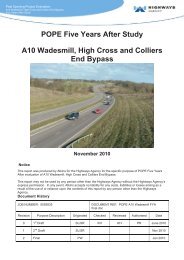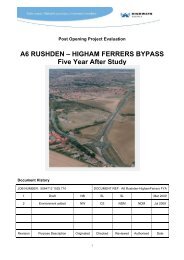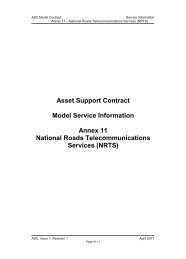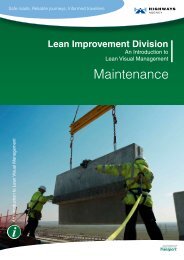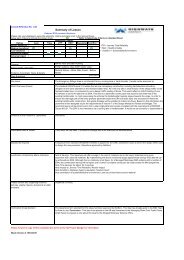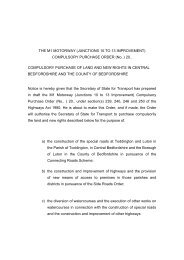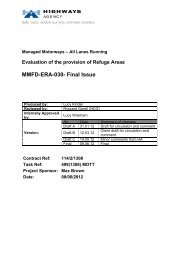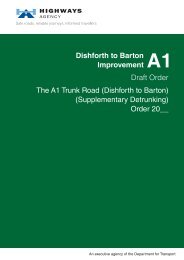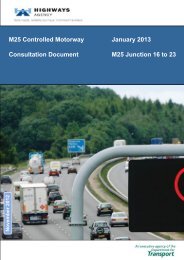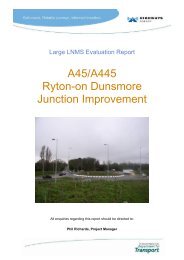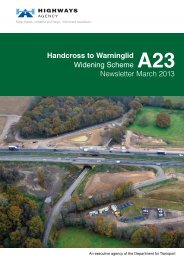A1(T) Elkesley Junction Improvements - Highways Agency
A1(T) Elkesley Junction Improvements - Highways Agency
A1(T) Elkesley Junction Improvements - Highways Agency
You also want an ePaper? Increase the reach of your titles
YUMPU automatically turns print PDFs into web optimized ePapers that Google loves.
Air QualityThe earthworks require the net import of The earthworks design would require theimport of some ~85,000 m³ of material. At present the exact location of where thismaterial will be sourced from is unknown. Whilst the majority of any generatedarisings can be accommodated in to the works a small amount of waste materials willbe removed from site to a licensed facility.Whilst the associated these traffic volumes in their own right are not considered to besufficient to impact on local or regional air quality, and any corresponding exportwaste spoil. The earthwork design has revealed that the materials needed for theconstruction of the preferred version cannot be fulfilled within the capacity of theconstruction corridor. About 85,000 m³ of materials would need to be imported. Atpresent the exact location of where this material will be sourced from is unknown.The effects of nuisance resulting from dust generated along the road and particulatematter (PM10), associated with principal movement in the area and along the haulroutes, remains a predicted impact. Other construction activities are also likely to giverisk to dust emissions including haulage routes, vehicles and construction traffic;materials handling, storage, and stockpiling.MitigationAs part of the contract, and prior to commencing the works, the currently unidentifiedcontractor will be required to prepare a detailed Construction EnvironmentalManagement Plan (CEMP). The CEMP functions to avoid environmental impactsthrough ensuring appropriate management and monitoring onsite as well as includingappropriate mechanisms to managed and report exceptional unpredicted impacts(such as those that occur during an accident or emergency). Specific inclusionswithin the CEMP will be:• the implementation of best practice dust control and suppression measures tominimise dust generation and the excessive release of particulate matterduring construction including; damping down of working earthworks in dryweather, wheel cleaning prior to movement onto public roads, limitations onearthworks activities during periods of high wind, sheeting of HGVs importingand exporting materials;• agreement and implementation of traffic control measures with the BoroughCouncil highways officers prior to commencement of the works;• the use of temporary fencing to protect areas of on-site planting that would beretained;• pre-clearance checks for nesting birds by a qualified ornithologist wherehedgerow clearance would occur between March and September; and• a requirement for the contractor to reach agreement on operational limits andassociated control measures with BDC Environmental Health Officers prior toconstruction. This is in accordance with Section 61 of the Control of PollutionAct (1974). Control measures will be based on the information containedwithin BS5228 Parts 1 (Code of Practice for Noise and Vibration Control onConstruction and Open Sites. Noise) and 2 (Code of Practice for Noise andVibration Control on Construction and Open Sites).34



